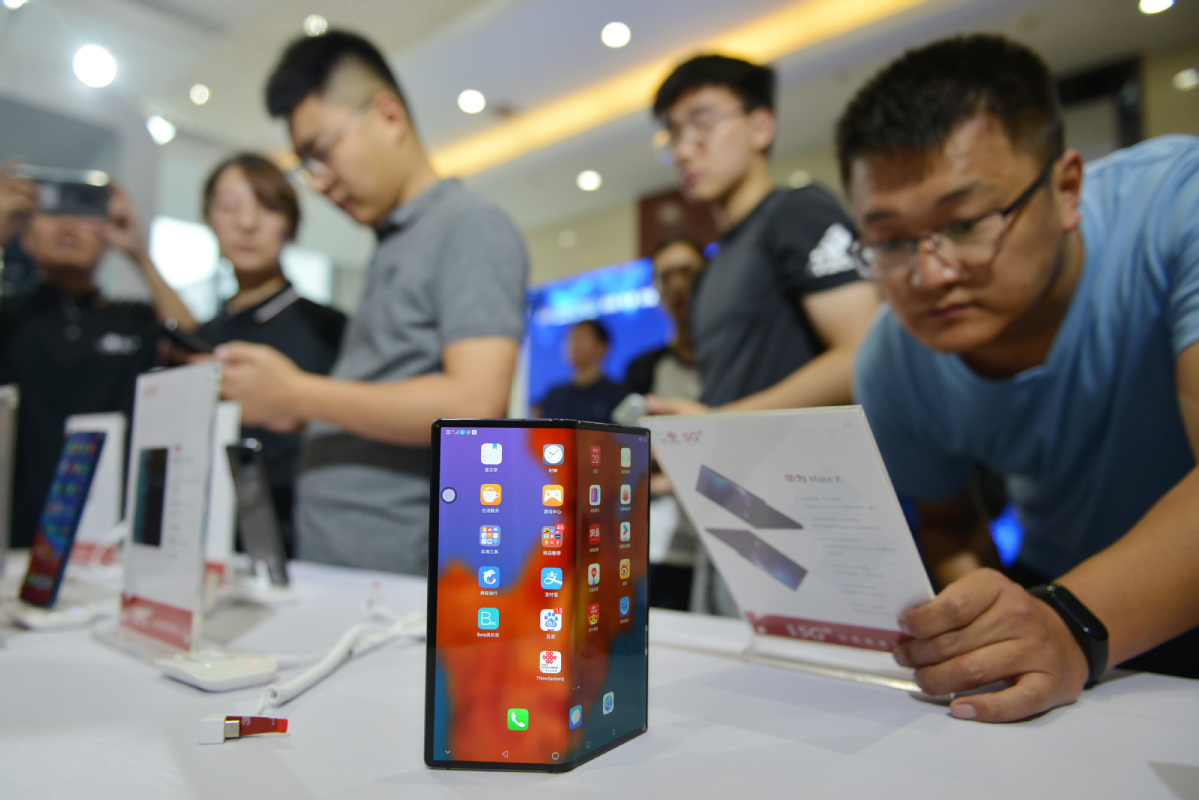High-tech displays to ride out the virus impact
By Fan Feifei | China Daily | Updated: 2020-05-06 10:01

The flexible display panel industry is set to witness growth this year, and shipments of thinner, lighter and foldable screens to Chinese smartphone makers will increase despite the overall negative impact of the coronavirus pandemic on handset sales, said industry insiders.
They said Chinese panel makers such as BOE Technology Group Co Ltd and Visionox Tech Co Ltd have scaled up production capacities in certain segments-like flexible screens used for mobile devices and smart wearables-to meet the surging demand.
According to market research firm Omdia, worldwide smartphone shipments are expected to plunge by 13 percent in 2020 as the contagion takes a toll on both consumer demand and supply-chain availability. But the market for active-matrix organic light-emitting diode or AMOLED smartphone displays is expected to rise by 9 percent this year.
Shipments of AMOLED panels used in smartphones are set to soar to 513 million units this year, up from 471 million in 2019, the consultancy said. This indicates that the penetration of AMOLED panels is rising sharply.
Brian Huh, principal analyst of small/medium displays at Omdia, said Apple Inc is expected to expand its AMOLED iPhone lineup to three models in 2020, up from two in 2019. "Meanwhile, Chinese smartphone makers are expected to increase the number of high-end smartphones integrating AMOLED panels this year," he said.
Demand for foldable smartphones is helping fuel sales growth for flexible AMOLEDs. Panel shipments to Huawei and Xiaomi increased 287 percent and 120 percent, respectively, to reach 73 million and 20 million units last year, and both companies increased their adoption of AMOLEDs in place of LCD in their mid to high-end smartphone lineups, Omdia said.
Samsung Display shipped 407 million AMOLED smartphone panels in 2019, up 8 percent from 2018. This gave the company a dominant position in the market with an 86 percent share of unit shipments for the year.
However, Samsung Display's relative share of total AMOLED panel shipments continued to decline. Other panel makers such as BOE and Visionox increased their panel shipments. Excluding Samsung Display, total panel shipments increased by 113 percent to reach 64 million units in 2019.
AMOLEDs are more flexible with faster response times, high contrast and wide visual angles compared to traditional LCD panels.
Some smartphone makers have started to roll out foldable display phones since last year. "The shipments of flexible display screens were unstable in the initial stages, as such technology was not mature, prices varied widely and consumer acceptance fluctuated," said Wu Rongbing, Omdia's principle analyst, adding that these issues should be improved this year.
Chen Jun, vice-president of Beijing-based market researcher Sigmaintell Consulting, said: "With the arrival of the 5G era, flexible AMOLED products have broad application scenarios due to their foldable and flexible characteristics. They will bring about differing and high-quality experiences for consumers."
Sales revenue of global foldable smartphones should exceed $100 billion in 2025, an increase of over 80 times compared with 2019, Chen said.
BOE is doubling down on flexible screens mainly used for smartphones, as well as expanding its presence in the internet of things, vehicle-mounted systems and other emerging industries.
"AMOLED technology is the future trend for smartphone panels. At the moment, technological upgrades of display panels on smartphones concentrate on appearance, function and image quality," said Zhang Yu, vice-president of BOE.
The company has three sixth-generation flexible AMOLED production lines. It started mass production of flexible panels at its facility in Chengdu, Sichuan province, in October 2017. The panels have already been used by more than 10 smartphone manufacturers.
The company's second line in Mianyang, Sichuan province, started mass production in July, while work on its third facility commenced in Chongqing in 2018.
Visionox accelerated expansion of its smartphone display panels and provided AMOLED technology for smartphone manufacturer Xiaomi's camera.
The company has also offered AMOLED screens for ZTE's first 5G flagship smartphone, the ZTE Axon 10 Pro. Last year, Nubia unveiled its first wearable watch-like smartphone Alpha, which features a four-inch flexible screen manufactured by Visionox.
























